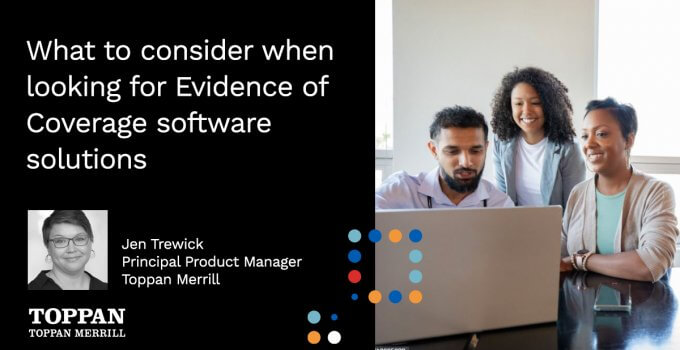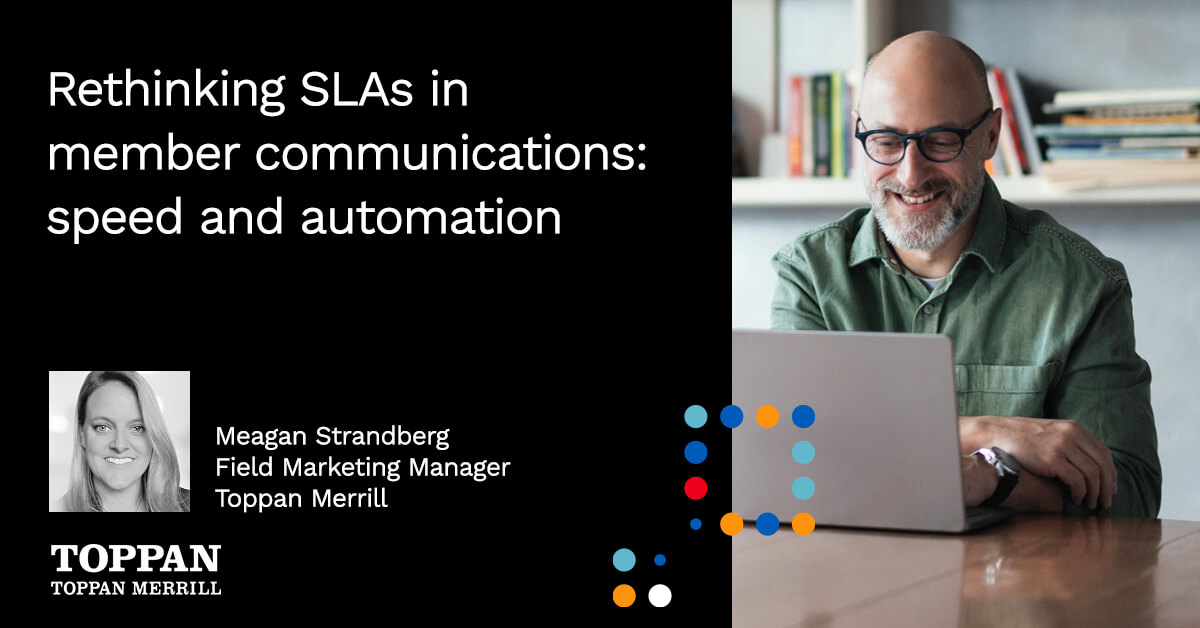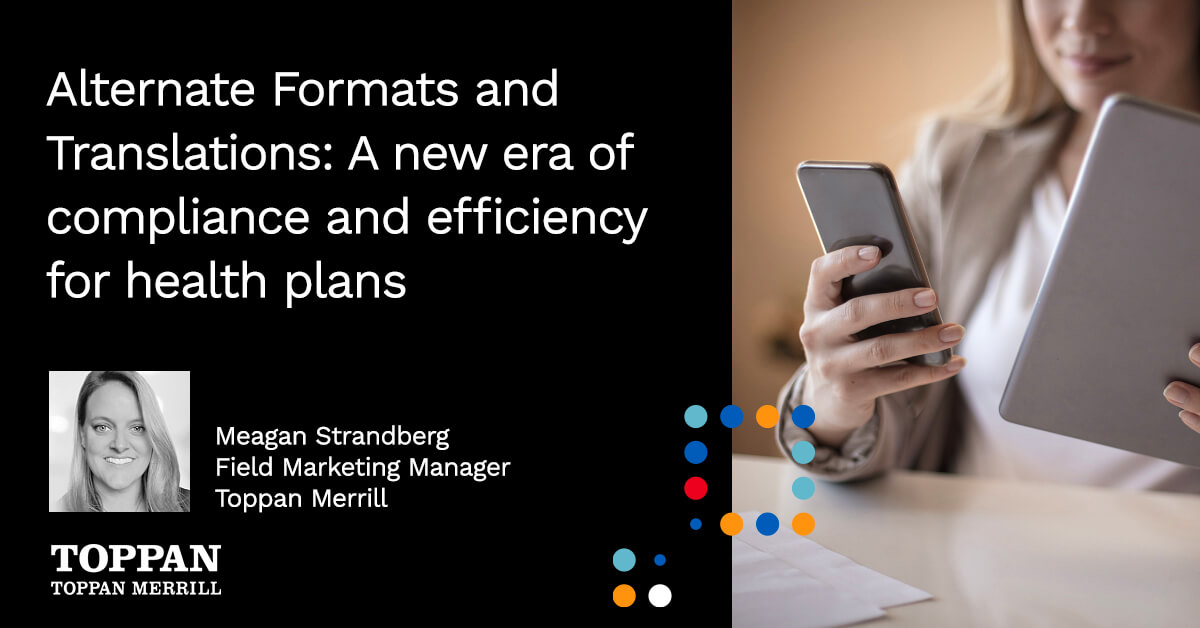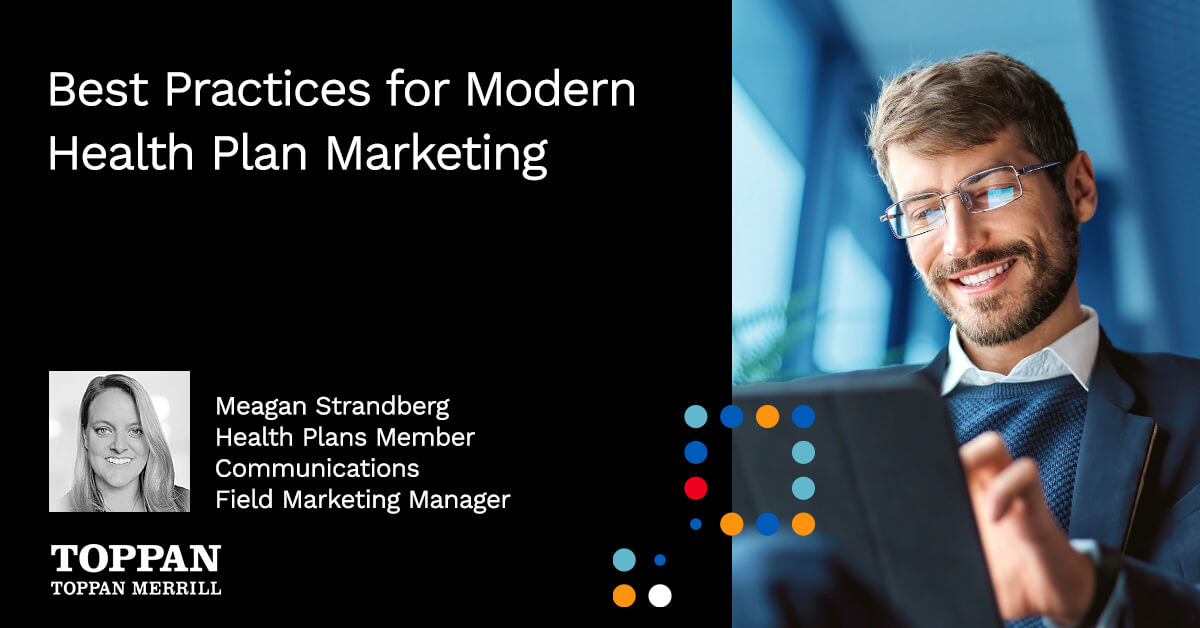Evidence of Coverage (EOC) documents are easily considered one of the most complex documents created during Medicare’s Annual Enrollment Period (AEP). At 10-12 chapters for each document, depending on the plan type supported, they provide members with crucial plan information. The EOC provides comprehensive plan details including benefit information, out-of-pocket expenses, member rights and responsibilities, and information on how members file appeals. The EOC also provides contact information for regulatory and state departments, as well as contact information for the Health Plan’s customer service team, and additional internal areas.
EOC Timeline
The EOC timeline is tight, and out of a Health Plan’s control. The clock starts when Centers for Medicare & Medicaid Services (CMS) post the models for the next plan year; this posting is typically in mid-to-late May and has occurred as late as mid-June. CMS states EOCs must be made available to members on the plan’s website on October 15. Prior to this date, health plans will submit and revise their bids with CMS. CMS will release new models or a memo with changes, or possibly both. Health Plans need to be prepared to act to ensure all of the appropriate content for their plans is updated in the EOC.
By CMS requirement, health plan providers need to send a copy of the Health Plan document within 3 business days of any request, the timeline to complete the document is greatly shortened to ensure the printer can produce these documents and can fulfill requests within the 3-day window.
While the digital version of the Health Plan must be on their website by October 15, it also needs to be accessible, which means additional time must be built in to ensure 508 tagging is completed and verified. All in all, it’s safe to say each EOC will go through at least four rounds of updates, and everyone who’s worked EOCs just smiled at that number.
Also, it is very common that not just one EOC document, but several EOCs, are simultaneously going through this process. Typically, there is one EOC document for each plan the Health Plan supports, and depending on the plan types, this may mean following multiple model documents. Quick math assures us, as plans and models add up, the complexity and stress of the season compounds, and this is where dynamic publishing solutions provide much needed support and help.
EOC Software Solutions
In the last decade, dynamic publishing solutions for EOCs have grown and the market expanded with available solutions. There are three most common solutions: Software as a service (SaaS), SaaS with Professional Services, and Managed Solutions. What are these solutions and what should you expect from a dynamic publishing solution for EOC document creation?
SaaS Solutions
SaaS solutions offer Health Plans an internet-based platform to manage their content and data. There are two “flavors” of SaaS Solutions. The first option is a solution where EOC model content exists and an HPMS data model is available. The second option is a solution where users must load EOC content and build out their data module.
There are obvious differences between these options, and both have their strengths and weaknesses. Remember, both options also greatly depend on the type of Health Plan user, whether they will use the platform frequently, and how intuitive the platform is for setting up content, applying business rules, and mapping data. EOC documents, in particular, contain many pages of tables.
Quick tip: These tables are important, so be sure to review how the SaaS provider builds and maintains tables.
For EOCs, the user skill set becomes important in SaaS solutions because of the complexity of the document, and the seasonality of when the system is used. In addition to applying business rules, mapping data and managing content, users also need to juggle model document style rules and style preferences of their Health Plan company brand.
Quick tip: Ensure your solution can manage a rule to keep a box anchored to text in the Problems and Complaints Chapter and ensure you can apply style or emphasis to your plan name or URL at the variable level. Ensuring these capabilities ultimately leads to a reduction of time-consuming proof cycles.
Hybrid Solutions
A Health Plan may decide their user group may not have the skill set needed to fully implement their plans and make changes and updates every year. Rather, they would like their users to access the platform throughout the season to manage their plans, and make updates to variables, content and create proofs. In this case, the Health Plan will want to find a SaaS solution with Professional Services. Professional Services solutions typically provide the same offering—a plan, update and proof management relationship—with the option to include packaged service bundles with a few additional features. These service bundles include the option to manage on-boarding and implementation tasks, like mapping, to more complex updates that require extra support throughout the EOC document season.
In both of these SaaS solutions, a Health Plan needs to understand how the solution will help manage their plans efficiently. Variable use helps to manage plan constants, but when multiple plans exist it’s important to understand if, for example, premium content can be configured to pull in and out of plans.
Quick tip: To make sure you don’t miss important change options. For example, be sure to ask if a user can answer “yes” or “no” to a plan premium. or if they need to modify every instance of the content change in the EOC.
Likewise, Health Plans need to understand how updates are put into place, or updated by the SaaS solution provider, during the season. If model content is provided by the platform and an update is needed due to a memo, is the solution provider making this update for you, and pushing it to your content?
Quick tip: Make sure to ask if the provider will make updates or if you will need to make directly in the system? Knowledge of this, ahead of the season, will provide your team with an important advantage for ensuring a smooth update process.
Health Plans also need to look for, and be aware of, hidden costs that may exist in solutions where changes need to be executed by their Health Plan users. The EOC models have seen their share of change over the last five years. While most of those changes were to content, and can be considered easy, additional changes included moving a section of content from one chapter of an EOC document to another, adding a second full chapter option in the Dual Eligible Special Needs Plan (DSNP) model and quite substantially consolidating the contact tables in the contact chapter.
One of the challenges Health Plans can face is how to implement the more significant changes year-over-year. If support from internal technology staff is needed to implement the solution, this may be a red flag because getting technology resources can be very challenging. Most internal technology departments are working on multiple projects for the enterprise, and as we all know it can be very challenging to obtain resources as company priorities are constantly changing. Health Plans may also need to have some level of Technology support after the models are released each year, to quickly and correctly apply updates.
Managed Solutions
Managed solutions are sought out when Health Plans are looking for a dynamic publishing solution wrapped with professional services to implement and manage documents throughout the EOC season. With a Managed solution, a Health Plan can spend more time focusing on the content of the documents, instead of spending time ensuring their users are familiar with how to use the platform. These solutions should come complete with many, or all, of the features previously described and additionally offer full-service Health Plan document creation. Health Plans will want to find a solution that understands the pressures of the season and has a solid editing process, with the ability to make changes and get content back into their hands in a reasonable timeframe.
Quick tip: Health Plans should ensure there are tools for reviewing and commenting, and you will want to be comfortable with the level of expertise the solution provides for managing model content and bid data, as well as their ability to manage your document creation.
With all of the solutions, it’s important Health Plans understand how their plan data is managed in the solution, and if it’s available strictly to the EOC documents or if it can be leveraged to create other documents. It’s also important to understand how model content and plan data is managed year-over- year. Does model content update or does each plan year begin with a new model? Are plans updated with changes or do plans reset each year with new bid data? The same should be asked about data that is handled outside of the bid. Does that data need to be re-entered or can it be carried over and reused? Health Plans should also confirm what kind of accessibility tagging is available throughout the solution they select, and if any type of additional processing time is required once documents are finalized. Also consider if there are necessary additional language requirements for plans that provide content in other languages, based on threshold requirements or decisions, to make content available for all plans.
How Toppan Merrill can help
Selecting the right solution for your Health Plan is important, and hopefully we have shared a few tips to make the selection process and your AEP easier. At Toppan Merrill, we offer a hybrid approach. Our team of experts take care of managing model content, uploading your bid data to our platform, and managing your plan changes year over year. This enables our Health plan clients to focus on what they do best, reviewing the content, focusing on the changes, the data, and the things that matter most to your members. We believe in implementing your content once and focusing on changes each subsequent year. Our team works exclusively in this content and brings years of document management experience to each Health Plan’s season of work. Please visit our website.



